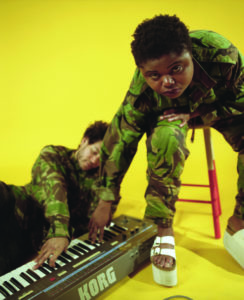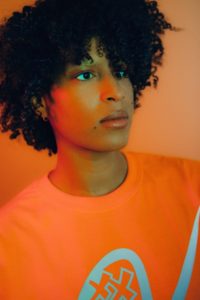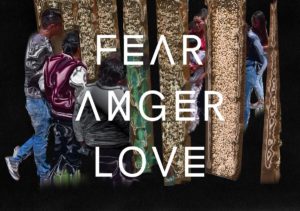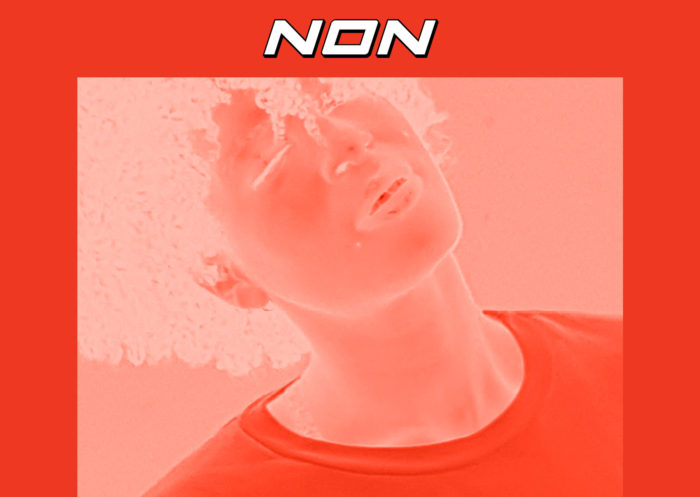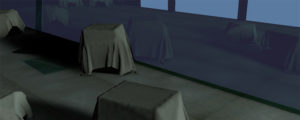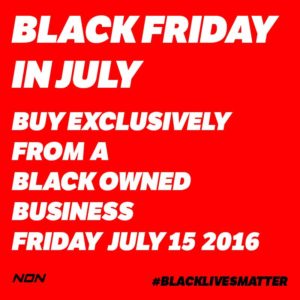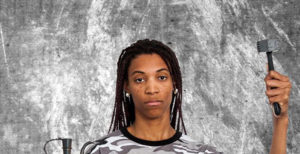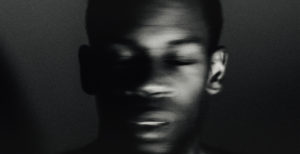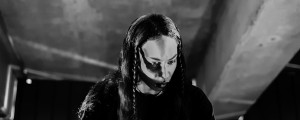Rianna Jade Parker is an expansive character who can’t stop learning. Taking from other people and planting seeds — metaphorically speaking — the London-based curator and writer lets these seeds grow over time. Parker unites with collaborators at specific times, in specific spaces and then continues on her own path, while still connected to an international network of peers through the internet. Visits to extended family in New York City as a teenager triggered an ever-growing interest in contemporary art, a field which remained foreign to her until then. For that reason, the idea of studying art never actually crossed the artist’s mind, studying psychology and international development instead. Landing in the art world by chance, this same knowledge contributed to a varied current practice, where Parker is determined to challenge standards that for her feel unfair and exclusive.
Interning at institutions like Black Cultural Archives enabled Parker access to valuable research material, collaborating with other people becoming the modus operandi within contemporary art contexts, like as recent pop up project ‘Queenies, Fades, and Blunts‘. Working with a handful of artists, this one night event at Freedman Space in Brooklyn brought together ideas of social, political and cultural beautification illustrated in the form of posters.
Right now, Parker is also preparing a contribution to the 3hd Festival, a project by event organisers and label Creamcake in Berlin, where she will be travelling for the first time to present an essay around the gendered and racialised body, as well as a candid panel discussion called ‘Body in Context‘ in order to include more voices into a larger discourse.
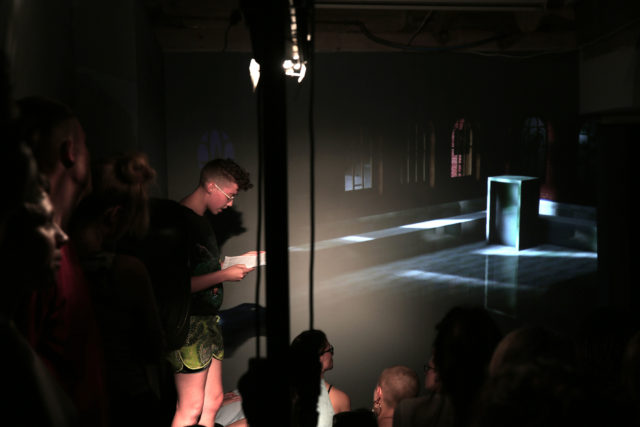
Parker is also co-running collaborative platform Lonely Londoners, along with Pelin Keskin and formerly Kareem Reid, explicitly devoted to building visibility for artists of colour and their practices, particularly if they remain underrepresented by the mainstream. Exhibition projects prompting transnational POC connections, such as Crossing The Black Atlantic, have happened through this platform, as well as external collaborations with organisations like Tate Modern or MoCADA (Museum of Contemporary African Diasporan Arts) in the form of conversations and an Instagram takeover, respectively.
Gentle Dust, which took place on August 25 at London’s Jupiter Woods, is part of a long-term project created to address urgent structural issues of exclusion in major art institutions. Artists and writers Isaac Kariuki, Imani Robinson and Caspar Jade Heinemann reflected on the current canons in major cultural organisations and on what they lack. The spoken word ran over the top of Sami El-Enany’s musical composition. The moving imagery was conceived by artist Dorine van Meel and acted as trigger for the poetic, yet political responses of the invited artists to the question of what (or who) is missing in mainstream artistic narratives.
In order to expand on all those projects and future ones, I met Rianna at a Costa Café across from Brixton station. The South London neighbourhood is where Parker was born, raised and currently lives. I find her immersed in the music coming out of her headphones, before beginning a concise and passionate chat about her projects and her role, in art and in life.
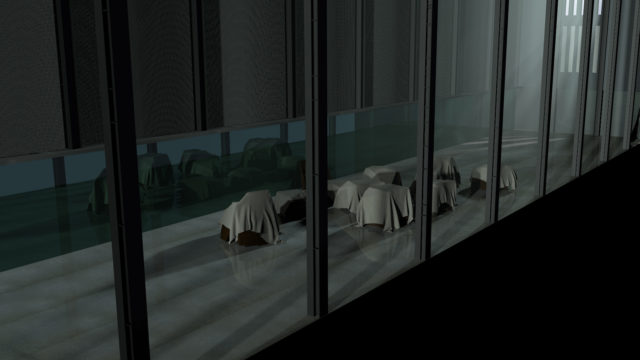
Tell me about your background… because you studied psychology and international development.
Rianna Jade Parker: Psychology was the compromise I made with my parents for not staying on the Medicine route but I got to the second year and then I thought: ‘I can’t do this’. I found it very boring, I just was not stimulated in any real way.
..boring?
RJP: The way in which undergraduate Psychology is taught in the UK is particular… essentially you study under their logic of the psyche because you have to and deriving from that doesn’t win you points with your lecturers. So I thought, maybe I can find a degree that I can enjoy regardless so I made the change to international development because, why would I not want to learn about the structure of the the world as we know it and how we got there? For a few different reasons, studying art was never an option for me. In my home art was treated as a hobby at best, so it was very difficult as a teen to justify doing something different and funnily enough, as an adult it’s even harder to explain to them what I do now.
I had to figure out art and creativity by myself, more specifically what ‘art’ even means to whom, where and why. Spending so much time in New York helped, the intensity and the pace of output exhibited by my over-worked family and friends helped to develop the work ethic I have now. Every time I returned to London it was as if I had new Duracell battery in my back and I just started pushing out these ideas via whatever medium I had. But in the past two years I have been blessed to work collaboratively on The Lonely Londoners and parallel to that I’ve grown up independently and artistically.
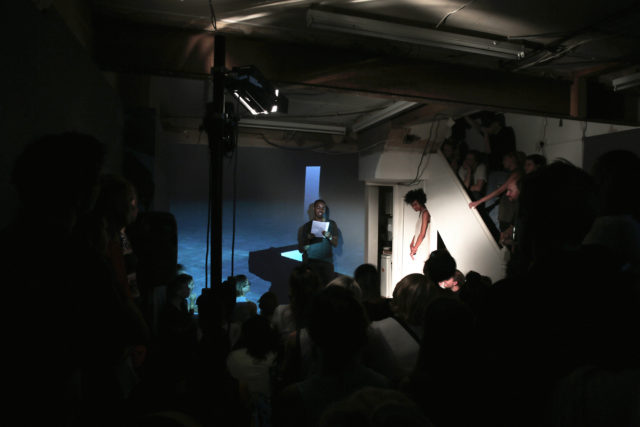
Is this when you started with the Lonely Londoners, while doing this internship?
RJP: Yes, during that year in the summer, Pelin (Keskin) and I met on Tumblr and started going to see the art that London had to offer together. We were mainly friends having conversations about where we went and we always had a (valid) complaint about something fabricated or simply overlooked. We started The Lonely Londoners (LL) trying to address those gaps and misconceptions with no tangible or fiscal resources and without a recognised background in art. Relying on a community of friends we also met online, artists we knew and whose work we admired as well as the older people we were meeting and became our mentors.
Rather than hold an exhibition every two or three months, which is not impossible but rather unnecessary, with LL we want to make sure the kind of conversations that challenge the dominant narratives in art continue to happen and that we remain mobile, flexible and ever changing.
How does this interaction with the online community work, how is this conversation?
RJP: We all live in or are based in different cities and continents so we rely on the internet, a lot. We’re very accessible online via our social media pages and we’ve been working like this for years. We’ve always found new artists and collaborators this way. The best feeling is knowing that our artists trust and believe that we genuinely are here for them. These are artists of colour, immigrants and other marginalised people trying to work in an industry that will happily take and not compensate or credit.
I am not checking blogs or other trend forecasters, rather I take much more joy in finding content creators and creative people organically… we’ve done this by relying on a very good mixture of people who we respect and value. And, in turn, we do the same for them. That’s how we do it, so far.
You always work collectively, including other people in your multifaceted practice.
RJP: We started the collective because we wanted to work together to do something for everyone. We are all able to work individually and have done so before but I don’t like any variant degree of attention to be on me as a singular person, as I’m not here just by myself. I don’t think I am shy or inwards in that way but for me it’s a weird position to take when I feel influenced by so many people and so many things. I like to reference everything I can, as it has been a lot of people on the internet and IRL who for many years have been a silent teacher to me, maybe not even actively or intentionally. Some have no idea they’ve impacted me in this way, others I had to reach out to just to say: ‘This is the role you played in my life’.
I would like us to remain flexible, honest and adaptable; the world is reforming so how could we not? We are trying to figure out what that change is going to be and at the core of our practice is to represent narratives and artists that are not often seen in main or ‘contemporary’ galleries and art spaces.
I see your practice as very platform-like. You say that you want to have your voice heard before you are given the chance.
RJP: Yes, we have to do it. Now it’s easier, after two years, to find spaces. Most of the artists are coming from outside academia and/or the white cube as we know it, where there is little to no support. We learned very quickly that it is not just about the physical space but what is done in the space and who feels welcome to enter that space. It’s easier, for instance, when it’s a one time event, it’s easy to be radical and different. But a sustainable art practice requires a lot more action with real intention behind it to create this kind of bridge.
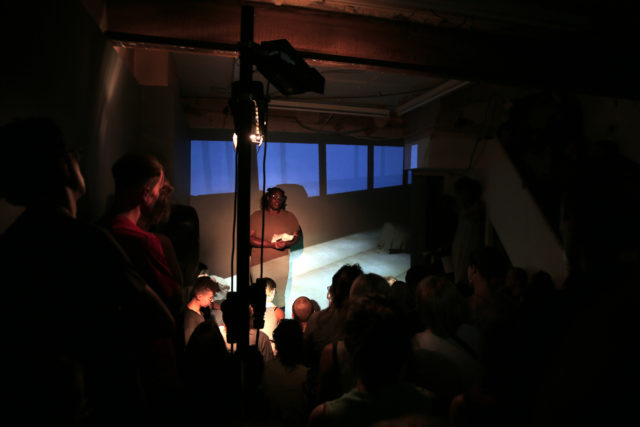
In terms of a relationship with music, I have the feeling you are very connected with it.
RJP: My relationship with music has changed dramatically in the last three years or so. I always felt an affinity with music but never explored it further than my iPod and my mum’s vinyl player. Recently, I’ve been surrounded by more musicians and DJs who have infiltrated my understanding and uses of music in the best way.
These days I’m actively thinking about new ways to incorporate music and other sound into the art spaces I curate. Sami El-Enany was actually the first artist Dorine and I commissioned for Gentle Dust. Many musicians, old and new, have definitely changed my world. People constantly assume I’ve worked in music before working in art but its definitely not me, I don’t have that talent, it’s my friends!
Yes, I thought it was surprising and inspiring when I saw in an article you wrote featuring five contemporary digital artists and you mentioned NON Records as one of them.
RJP: I was introduced to Chino Amobi and NON some months prior to that article, through mutual friends. In that piece, I spoke about the art I care about the most. It’s not that I don’t care about visual art or art that you can hang on the wall but digital art allows certain freedoms and removes parameters in a way that doesn’t require as much time as traditional media, nor does it have as big of strain on finances.
How do you make art when you don’t have money? As art making becomes more convenient and cost effective, does the value of the work automatically decrease? Where does the ‘value’ come from and how do we measure it? Someone making art via their computer and software doesn’t mean it should be given away for free. There should be a balance, of course, but how?
If art is not sustainable generally and in your own life, then I don’t see the point of it, honestly. If you wake up everyday and you’re stressing out about new materials, hoping a curator somewhere pays attention, hoping you will garner a crowd at your opening, hoping the gallery doesn’t take too large of a commission fee, hoping for lack of any other option, then that is not the kind of art anyone needs to be making. But a community of supporters that includes locals, patrons, curators and space holders who truly engage with your work… these people can help to generate this sustainability.
Right now, I continue to work in the arts anticipating that something or someone along the way is saved, like I was. We can maybe even change the whole structure of the world! But that would take much more than art. So for now, I’m happy for us to use it as and when we can, however we can. That’s the kind of power you find in a people’s art.
I wonder whether art has the power to change things, to shift ideas?
RJP: Art has done that, and art can do that but I don’t think we can rely on it, at all times, in every instance. I think, with art having this potential power, we need more now than before, artists who believe that as well, and actually care about that tapping into that potential.**
